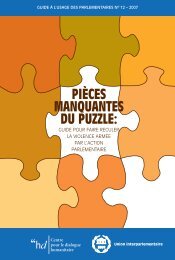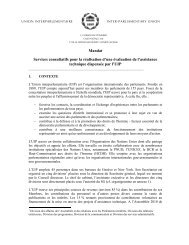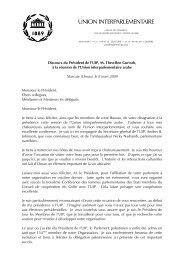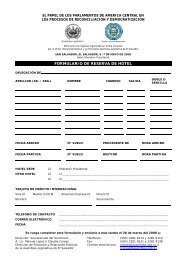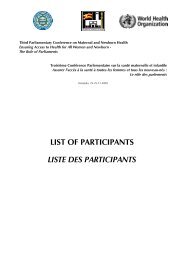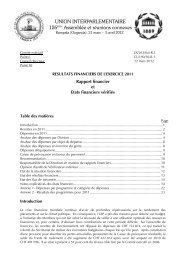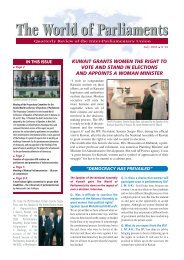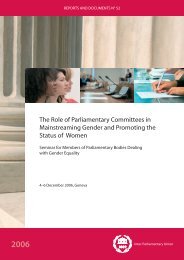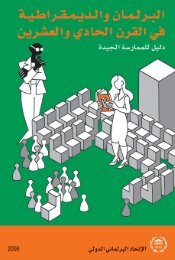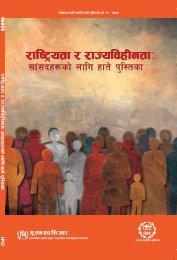MISSING PIECES - Inter-Parliamentary Union
MISSING PIECES - Inter-Parliamentary Union
MISSING PIECES - Inter-Parliamentary Union
You also want an ePaper? Increase the reach of your titles
YUMPU automatically turns print PDFs into web optimized ePapers that Google loves.
THEME 6<br />
Assistance Committee (OECD DAC) to allow Official Development Assistance<br />
(ODA) to be used for “technical co-operation and civilian support<br />
for . . . controlling, preventing and reducing the proliferation of small arms<br />
and light weapons” 5 clearly establishes this link for the donor community.<br />
In addition, at the fall 2005 session of the UN General Assembly, states<br />
adopted resolution 60/68 which calls upon states inter alia to “develop, where<br />
appropriate, comprehensive armed violence prevention programmes integrated<br />
into national development strategies, including poverty reduction<br />
strategies”. 6 Such decisions reflect the understanding that weapons control<br />
and reduction is often a prerequisite to sustainable development. Conversely,<br />
socioeconomic development should lead to a decrease in the demand for<br />
weapons.<br />
“The 114 th Assembly of the <strong>Inter</strong>-<strong>Parliamentary</strong> <strong>Union</strong> . . . calls upon<br />
parliaments to promote full implementation by their governments of<br />
their pledges under the United Nations Millennium Declaration to ensure<br />
the achievement of the Millennium Development Goals, a measure<br />
which requires disarmament and the reduction of armed violence.”<br />
—IPU resolution, 114th Assembly, 12 May 2006 , para. 35<br />
It is however critical to start identifying precisely which approaches are<br />
effective and which are not. Focusing on youth violence, the World Health<br />
Organisation (WHO) has identified a spectrum of prevention strategies,<br />
ranging from social development programmes to incentives to complete<br />
secondary schooling and pursue higher education, mentoring programmes,<br />
family therapy, public information campaigns, or promoting the safe and<br />
secure storage of firearms. 7 Some approaches, however, have already been<br />
proven ineffective in isolation, including gun buy-backs, trying young<br />
offenders in adult courts, or individual counselling. More research is central<br />
to identify which strategies may offer the most promise.<br />
DEMAND REDUCTION IN PRACTICE<br />
The past decade has witnessed a marked increase in initiatives around the<br />
world aimed at reducing armed violence and small arms availability.<br />
Though often popularly perceived as a heavily armed society, there are<br />
comparatively few commercially manufactured firearms in Papua New<br />
Guinea. 8 A wide variety of guns are nevertheless available, and they are<br />
being used to devastating effect. 9 Violence in Mendi, the capital of the<br />
117



